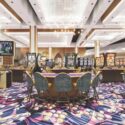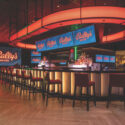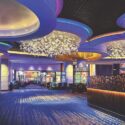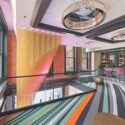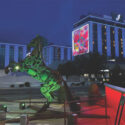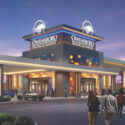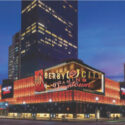
Predicting the casino resort customer of the future has sparked an interesting debate.
Many think millennials will be the downfall of the traditional casino floor. Others think way too much time is spent trying to decipher that demographic, which has a low propensity to gamble. Some argue the industry should continue to focus on the bread-and-butter gaming customer—baby boomers—who will continue to be viable for several decades. And then there’s the next emerging gaming-centric generation that, curiously, doesn’t get a lot of attention—Gen X, which is currently the 30-50-year-old segment.
The optimum future target demographic exists somewhere in the middle, and there are several interesting emerging trends that support this.
Instead of catering to one generation or the other, the gaming and design industry should focus more holistically, which is best accomplished by broadening and elevating the total guest experience for all demographics.
All too often, resort offerings are compartmentalized, designed to appeal to a very narrow guest profile. When properties fail to perform to expectations, the marketing department is usually the first to be scrutinized for not promoting these offerings properly, or the design team is criticized for not incorporating emerging trends.
But when resort offerings and experiences encompass a broader spectrum, they yield a wider audience. The best opportunities for future success happen when engaging experiences develop meaningful connections between a property, its brand, and all guests, regardless of the generation.
How can this be accomplished? An interesting example is by gaining a better insight of each generation’s psychographics, then finding commonalities that merge them. Psychographics is the definition or identification of personality traits, attitudes, interests and lifestyles.
Big Data has the potential to revolutionize this kind of study, but data analytics have to be translated into ideas and concepts that are usable. Health and wellness is one convergence. For instance, millennials as a group aspire to clean eating and active lifestyles. As a demographic, they practice good health and exercise. They seek great outdoor experiences and desire direct connections to the outdoors within indoor environments; they don’t like to be boxed in.
Boomers, by comparison, aspire to live longer and be healthier in their later years. In many instances, they aspire backwards. They want to achieve greater longevity by feeling young and acting young, and interestingly they look to millennials as inspiration. Boomers have clearly become much more health-and-wellness focused than they were just 10 years ago. They’re more in tune with outdoor experiences and connections like millennials, and today are actually more likely to take outdoor-oriented adventure trips than any other demographic segment. The ability to afford adventure travel is part of that equation, but the overall principles remain the same—multi-generational wellness, high-performance living and connections to the outdoors are not generational experiences, but human experiences.
How does this translate to design? One of the hottest trends in hospitality today is wellness. Flags like Four Seasons, JW Marriott and MGM are implementing wellness as a differentiator. Look at what MGM Resorts has created with its “Stay Well” guest rooms. These rooms incorporate the latest wellness technologies including air filtration and purification, personalized lighting, chromotherapy and increased acoustic treatments. According to reports, MGM is realizing 25 percent higher rate premiums on these rooms, which have better air quality and use more natural materials without chemical byproducts, such as low VOC paint, low-emission glues and natural organic linens. They also have better lighting, both natural and artificial, which promotes a more restful and calming environment. HBG Design is currently designing wellness-oriented guest rooms at two major casino resorts.
Hotel lobbies are becoming more welcoming and relaxing as well. Deidre Brady, HBG Design senior associate and interiors project manager, notes, “Complex patterns and textures found in nature can create comfort and stress relief. In the past, nobody wanted the casino guest to spend too much time in the hotel. Today, a more relaxing and healthy stay can clearly be a marketable priority.”
The pioneer who brought the outdoors inside the casino was Steve Wynn. Natural light became a very important design and brand element at Wynn Resorts properties, and their design teams took every chance to celebrate elaborate outdoor environments. Lately, MGM is also clearly going beyond the four walls of the hotel and casino and bringing the outdoors in (and vice versa). It’s successfully integrating immersive urban gardens and parks at its Park MGM neighborhood. In stark contrast to the old days, the company is encouraging guests to go outside and experience activities at the Park.
Multiple generations also share a heightened desire for quality, luxury and convenience. They want more than just a resort stay; they seek authenticity and context. Instead of collecting objects, they’re collecting and reporting their experiences on social media platforms. As guests continue to leverage immediate access to review and critique on the internet, they’ve become savvier about their choices. And as operators become more sophisticated about data analytics, they’re learning things about their guests that were unimaginable just a few short years ago.
It’s all a great runway for growth and sustainability.



